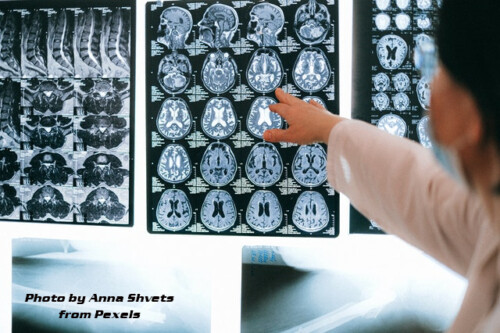Alzheimer’s Disease
By D.Y.A.N.A Editorial Team
Alzheimer’s disease is a progressive neurological disorder that affects millions of people worldwide. It is the most common cause of dementia and is characterized by memory loss, cognitive decline, and changes in behavior and personality. In this report, we will discuss the possible causes, treatments, and possible cures for Alzheimer’s disease.
Possible Causes: The exact causes of Alzheimer’s disease are not yet fully understood, but several factors have been identified as potential contributors. These include genetics, age, lifestyle factors, and environmental factors.
- Genetics: Researchers have identified several genes that may increase the risk of developing Alzheimer’s disease, including the APOE gene, which has been associated with an increased risk of late-onset Alzheimer’s disease.
- Age: Age is a significant risk factor for Alzheimer’s disease. The risk of developing the disease increases with age, with most cases occurring in individuals over the age of 65.
- Lifestyle Factors: Certain lifestyle factors, such as a lack of physical activity, poor diet, smoking, and excessive alcohol consumption, may increase the risk of developing Alzheimer’s disease.
- Environmental Factors: Exposure to certain toxins or pollutants may also increase the risk of developing Alzheimer’s disease. For example, exposure to high levels of aluminum has been associated with an increased risk of developing the disease.
Treatments: There is currently no cure for Alzheimer’s disease, but several treatments are available that may help manage symptoms and improve quality of life for individuals with the disease.
- Medications: Several medications are available that may help slow the progression of Alzheimer’s disease and improve symptoms, including cholinesterase inhibitors and memantine.
- Therapy: Therapy, including cognitive behavioral therapy and psychotherapy, may help individuals with Alzheimer’s disease manage symptoms and improve their overall quality of life.
- Supportive Care: Supportive care, including assistance with daily activities, may be necessary as the disease progresses and individuals with Alzheimer’s disease experience greater cognitive decline.
Possible Cures: While there is currently no cure for Alzheimer’s disease, researchers are actively working to identify potential cures or treatments that may help slow or stop the progression of the disease. Some promising areas of research include:
- Immunotherapy: Researchers are investigating the use of immunotherapy, which involves stimulating the immune system to target and eliminate abnormal proteins that are associated with Alzheimer’s disease.
- Stem Cell Therapy: Researchers are also exploring the use of stem cell therapy, which involves the use of stem cells to regenerate damaged brain tissue and improve cognitive function.
- Gene Therapy: Gene therapy, which involves modifying or replacing faulty genes, may also hold promise for the treatment of Alzheimer’s disease. Researchers are currently investigating several approaches to gene therapy for the disease.
Tips for family caregivers:
Family caregivers of Alzheimer’s patients play a vital role in the care and support of their loved ones. Caring for a family member with Alzheimer’s disease can be a challenging and emotional experience, but there are several things that family caregivers can do to help their relatives with the disease.
Educate themselves about the disease: Family caregivers should learn as much as they can about Alzheimer’s disease, including its symptoms, progression, and treatment options. This can help them better understand what their loved one is going through and how to provide appropriate care and support.
Provide a safe and supportive environment: Individuals with Alzheimer’s disease may be at risk of injury or accidents, so it is important to provide a safe and supportive environment for them. This may include installing safety features in the home, such as grab bars and non-slip mats, and ensuring that the home is free from clutter and other hazards.
Encourage regular exercise: Regular exercise can help individuals with Alzheimer’s disease maintain their physical and cognitive function. Family caregivers should encourage their loved ones to engage in regular physical activity, such as walking or swimming, and may consider participating in these activities with them.
Maintain a healthy diet: A healthy diet is important for individuals with Alzheimer’s disease, as it can help support overall health and cognitive function. Family caregivers should encourage their loved ones to eat a balanced and nutritious diet, and may need to assist with meal planning and preparation.
Engage in meaningful activities: Meaningful activities, such as hobbies, socializing, and volunteer work, can help individuals with Alzheimer’s disease maintain their sense of purpose and identity. Family caregivers should encourage their loved ones to engage in these activities and may need to provide support and assistance to help them participate.
Seek support and respite care: Caring for a family member with Alzheimer’s disease can be emotionally and physically exhausting, so it is important for family caregivers to seek support and take breaks when needed. This may include reaching out to support groups, seeking respite care from a professional caregiver, or engaging in self-care activities such as exercise or relaxation techniques.
Family caregivers of Alzheimer’s patients can provide invaluable support and care to their loved ones by educating themselves about the disease, providing a safe and supportive environment, encouraging regular exercise and a healthy diet, engaging in meaningful activities, and seeking support and respite care when needed. By taking these steps, family caregivers can help improve the quality of life for their loved ones with Alzheimer’s disease and reduce the burden of caregiving.
In conclusion, Alzheimer’s disease is a complex disorder that affects millions of people worldwide. While there is currently no cure for the disease, several treatments are available that may help manage symptoms and improve quality of life for individuals with the disease. Researchers are actively working to identify potential cures or treatments that may help slow or stop the progression of the disease, and there is hope that new treatments will be developed in the coming years. Nothing herein is intended to diagnose, treat or cure any disease. Please do your research and seek professional advice before using any information.

